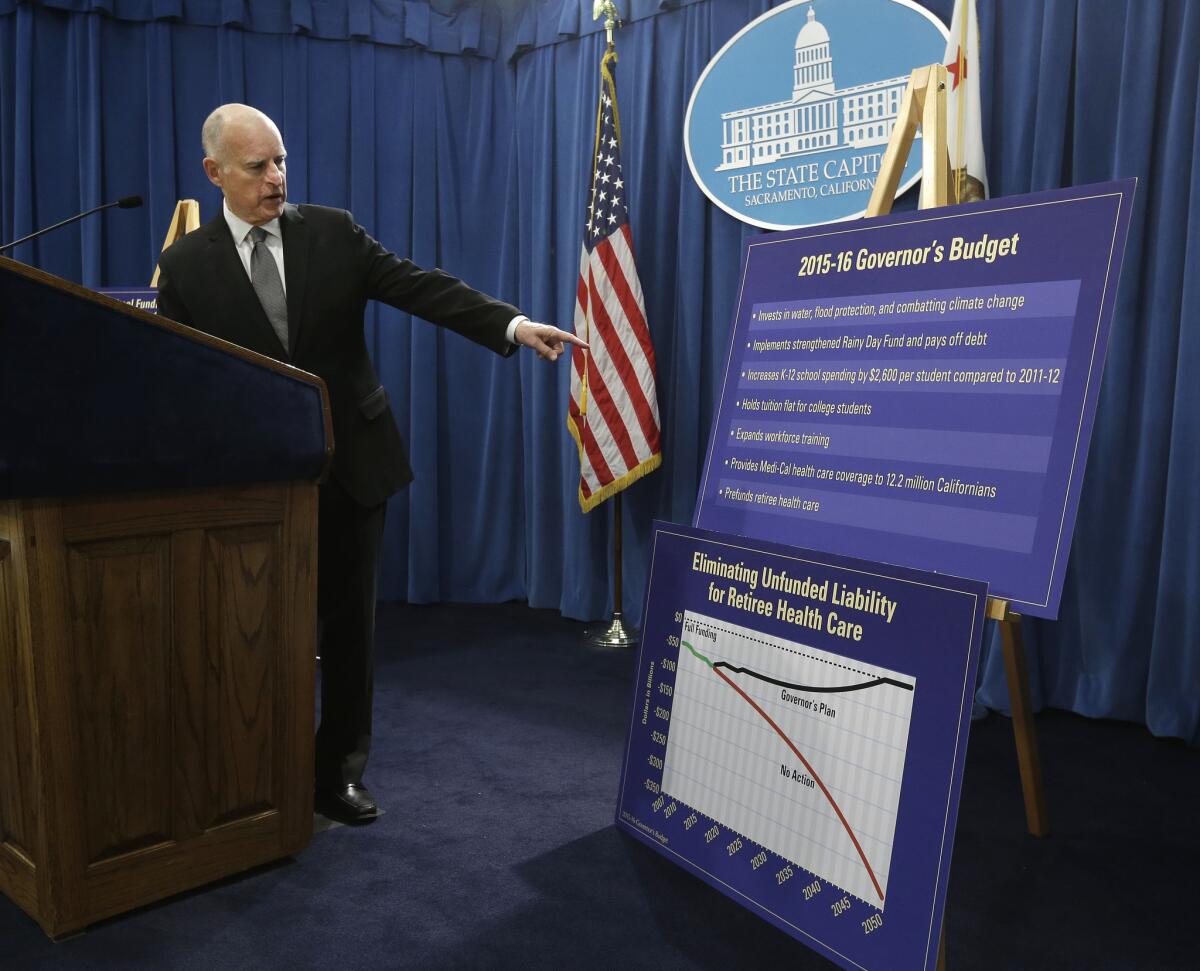Editorial: Gov. Jerry Brown’s budget highlights a glass half-empty

The $164.7-billion budget that Gov. Jerry Brown proposed Friday for the coming fiscal year highlights the glass-half-empty nature of California’s improving fortunes. His administration projects that the state’s economy will grow an impressive 4.5% in 2015 and that its unemployment rate will drop to 6.6% by year’s end, down from the current 7.2%. This improvement is expected to generate $5.3 billion more for state coffers. But joblessness remains far above the national average, which dropped to 5.6% in December. And when you factor in the cost of living, the state has the highest poverty rate in the nation by far, with nearly one in four residents living in poverty.
One consequence of the high poverty rate is that a huge chunk of the state budget — more than 30% — is projected to be spent on safety net programs. The biggest of those is Medi-Cal, the joint federal-state health insurance program for the poor, which covers almost a third of all Californians. Driven in part by increased enrollment in Medi-Cal, the administration expects to spend $1.4 billion more on health and human services in the coming fiscal year than in 2014-15. And that’s not even factoring in the cost of extending Medi-Cal, in-home supportive services and other health benefits to low-income immigrants who recently gained temporary legal status through President Obama’s executive action. Those people may be entitled to coverage under state law, entirely at state expense.
Also missing from the budget proposal is any contribution toward the healthcare benefits that have been promised to current state employees when they retire. Brown said the state will seek to split that cost — more than $70 billion — with employees through contract negotiations. Brown’s proposal does, however, dedicate $2.4 billion to the state’s rainy-day fund and debt repayment, as required by a ballot measure voters approved last November to beef up the state’s financial reserves
Given those costs, the projected increase in state revenues doesn’t seem like such a bounty. Nevertheless, the Legislature should still look for ways to restore the cuts in Medi-Cal payments to doctors, which have made it harder for Medi-Cal enrollees to find someone who will treat them. And lawmakers should seek to avert the tuition increases planned by the University of California regents. Brown’s budget is no help, offering no more to the universities than previously planned and threatening to cut the system’s funding if tuition is raised.
The ultimate solution for the state’s ongoing budget struggles would be more vigorous economic growth that lifts more Californians out of poverty. Brown’s budget has several proposals that would help, most notably using more than $1 billion in Proposition 98 funds and federal grants to expand worker training programs. Promoting growth is a long-term challenge, not something the Legislature can fix in one budget. Yet lawmakers should keep that goal foremost in their minds as they return to Sacramento.
Follow the Opinion section on Twitter @latimesopinion
More to Read
A cure for the common opinion
Get thought-provoking perspectives with our weekly newsletter.
You may occasionally receive promotional content from the Los Angeles Times.





